The Wapping Project mounts its final exhibition, 'The Lady From the Sea'
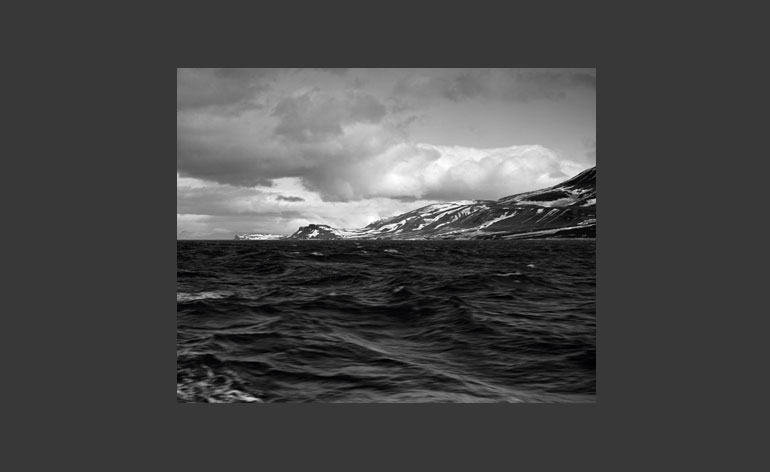

The photo essay, titled 'The Lady from the Sea', was shot over ten days in Longyearbyen, on the island of Svalbard, above the Arctic Circle
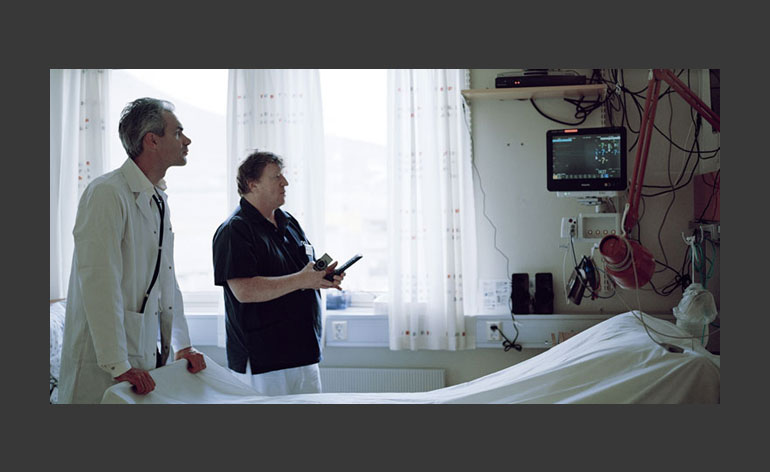
It is a modern interpretation of 'The Lady and the Sea', a 1888 play by Henrik Ibsen
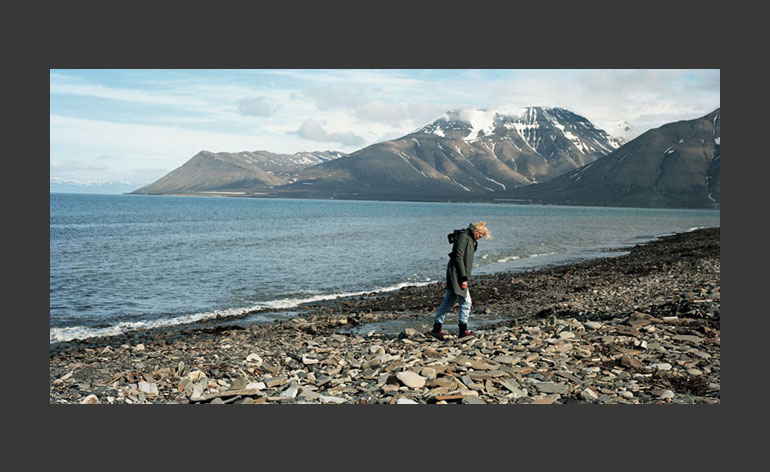
Zanon-Larcher's version was conceived and presented like a film

The central character is Ellida, played by British model Lianna Fowler

Zanon-Larcher shot the action - the romantic tussles, the mushing huskies, even the love-making - on still film while the static panoramas get the celluloid treatment

The story unfolds through a progression of tightly improvised scenes

Ellida's husband, the middle-aged Dr Wangel, is played by Angus Wright, while Patrick O'Brien plays 'the Stranger' (pictured) who completes the story's love triangle. Ellida 'turns her moral fortitude into a metaphor for all young women trapped within the suffocating constraints of small town politics, but who find the strength to rebel against its empty conventions,' says Jules Wright

Wright directed the mise-en-scene

According to Wright, the clothing is largely the actors' own, and the furnishings 'were exactly as we found them'

A moment of reflection inside one of the log cabins

The still shots are broadcast in a chilled hut at the Wapping Project, viewed from a bench piled with blankets
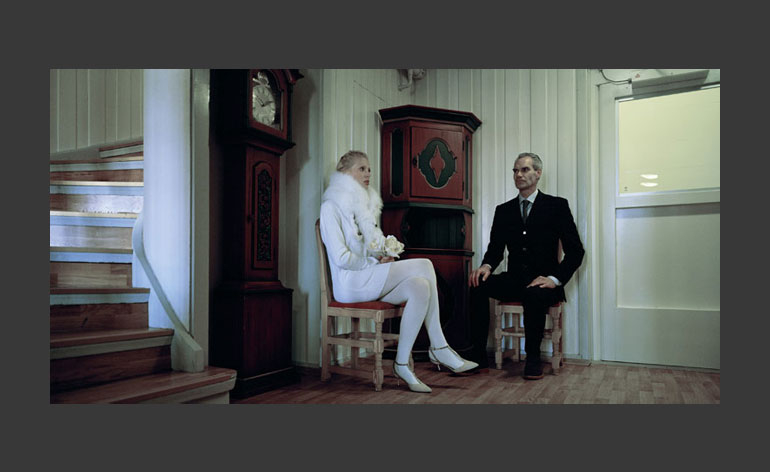
Even the wedding scene is fraught



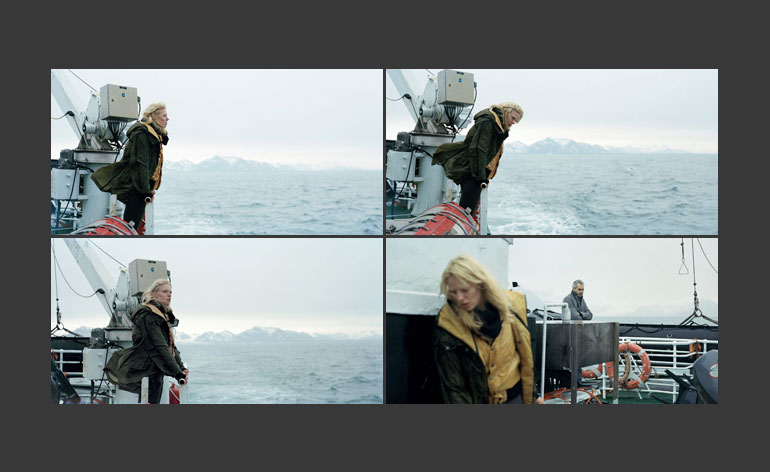
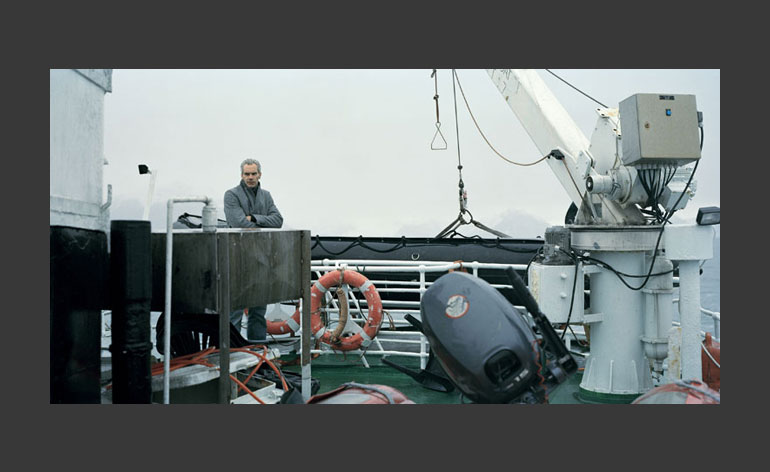















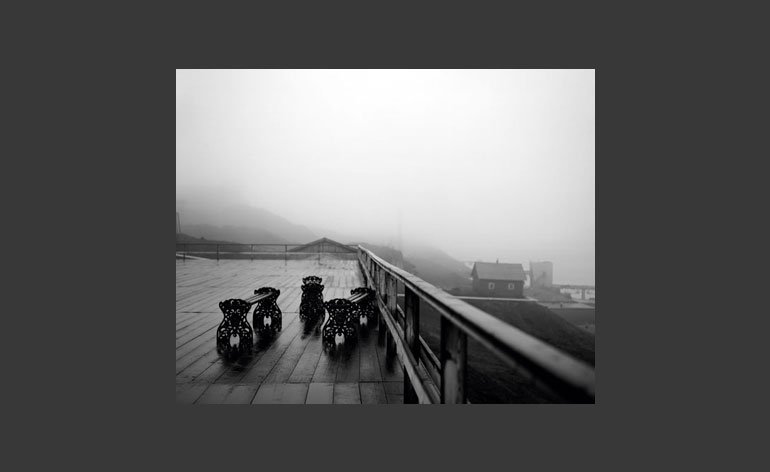



















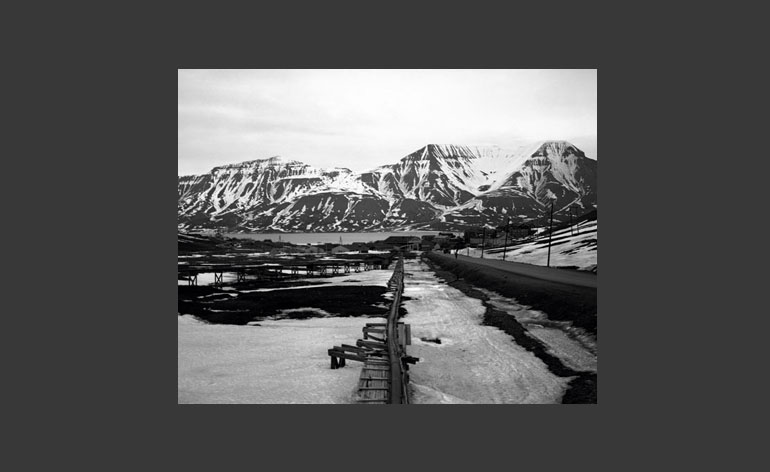












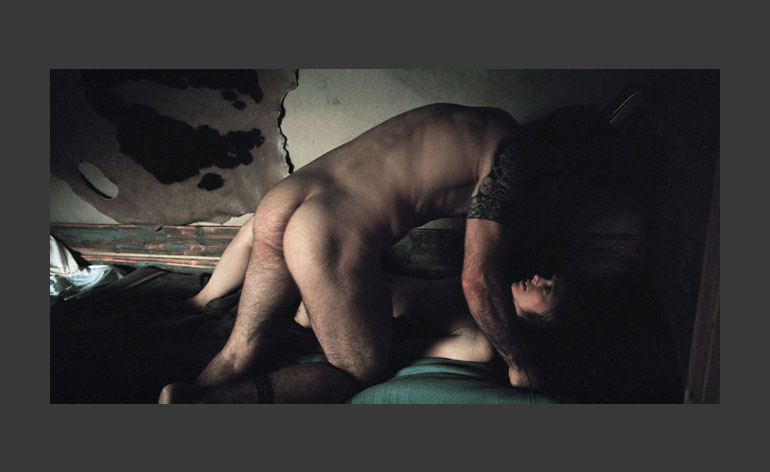




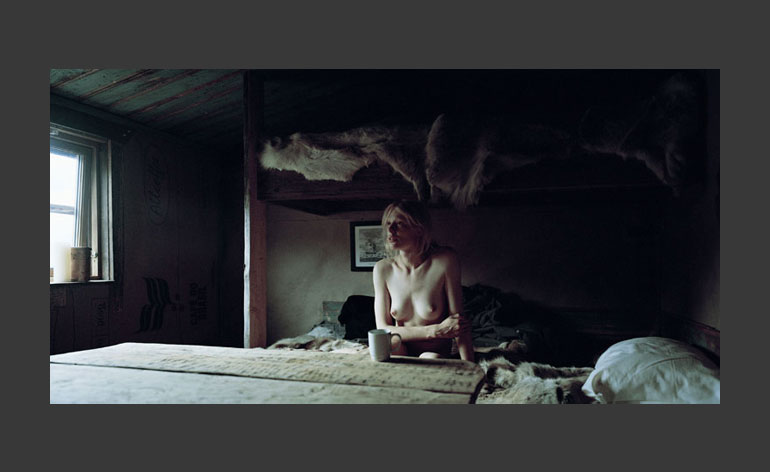


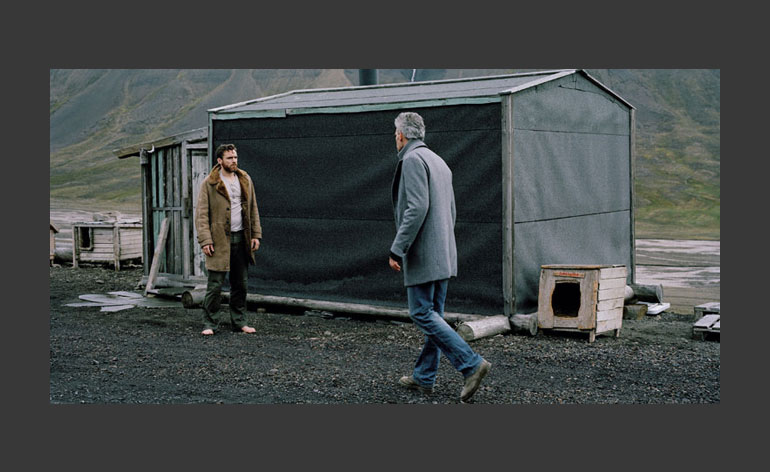







The final frame, incongruous in black and white, is 'a memory of what life was,' says Wright. An apt metaphor for the Wapping Project itself
Jules Wright and Thomas Zanon-Larcher did not intend for 'The Lady from the Sea' to be their swan song at the Wapping Project, the defunct hydraulic power station Wright has been running as an art-event-dining space since the 1990s. The decision to close the space and concentrate on the satellite gallery Wapping Bankside happened suddenly this autumn, after the bulk of the shoot had wrapped (after a ten-year germination), but this contemporary reenactment of the bleak 1888 play by Henrik Ibsen is a stunning farewell.
The duo have transformed the already damp, murky hall into the harsh terrain of Longyearbyen, Norway, the Svalbard Island community that was the setting for their redux. They've turned down the thermostat, spread actual permafrost across the floor and built replicas of the ramshackle wood huts they encountered up north. It even smells remarkably of reindeer. Piped in is an Arctic gale of a soundtrack by Billy Cowie.
This all lays the groundwork for Zanon-Larcher's ambitious photography essay, captured over ten days in Norway last summer. A hodgepodge of screens near the entrance run a companion video (filmed in near darkness just last month) on a loop. But the still shots, broadcast in the frigid hut, are the ultimate attraction, viewed from a bench piled with blankets.
The running time is 15 minutes but even the least patient viewers will stay the course, despite the absence of movement and dialogue, and despite the chill. Zanon-Larcher - with mise-en-scene by Wright - has portrayed a Nordic love triangle inspired by Ibsen's plot (aging doctor; young, lonely wife; handsome interloper) against the tundra fjord.
'People say, "That's absolutely amazing," but it's really so much more than that,' says Wright, clearly beguiled by the extraordinary landscape. 'Thomas comes from the Italian Alps and he's always had an obsession with snow and the north. And, well, this is about as far north as you can go.'
The fact that Zanon-Larcher has shot the action - the romantic tussles, the mushing huskies, even the love-making - on still film while the static panoramas get the celluloid treatment is a product of his confidence as a storyteller. The epic project 'is conceived and presented like a film,' says Wright, who, in turn, directed it as she would a play at her old stomping ground, the Royal Court theatre. The characters' torment translates through their posture and their anguished, forlorn expressions beneath the heavy, soupy skies. The folky layered wardrobe and blue-filtered Nordic interiors are compelling in their own way (according to Wright, the clothing is largely the actors' own, and the furnishings 'were exactly as we found them').
The final frame, incongruous in black and white, lingers as you struggle to rouse yourself. 'It's a memory of what life was,' says Wright. An apt metaphor for the gallery itself.
Wallpaper* Newsletter
Receive our daily digest of inspiration, escapism and design stories from around the world direct to your inbox.
ADDRESS
Wapping Hydraulic Power Station
Wapping Wall
London E1W 3SG
Based in London, Ellen Himelfarb travels widely for her reports on architecture and design. Her words appear in The Times, The Telegraph, The World of Interiors, and The Globe and Mail in her native Canada. She has worked with Wallpaper* since 2006.
-
 Put these emerging artists on your radar
Put these emerging artists on your radarThis crop of six new talents is poised to shake up the art world. Get to know them now
By Tianna Williams
-
 Dining at Pyrá feels like a Mediterranean kiss on both cheeks
Dining at Pyrá feels like a Mediterranean kiss on both cheeksDesigned by House of Dré, this Lonsdale Road addition dishes up an enticing fusion of Greek and Spanish cooking
By Sofia de la Cruz
-
 Creased, crumpled: S/S 2025 menswear is about clothes that have ‘lived a life’
Creased, crumpled: S/S 2025 menswear is about clothes that have ‘lived a life’The S/S 2025 menswear collections see designers embrace the creased and the crumpled, conjuring a mood of laidback languor that ran through the season – captured here by photographer Steve Harnacke and stylist Nicola Neri for Wallpaper*
By Jack Moss